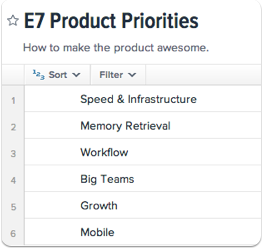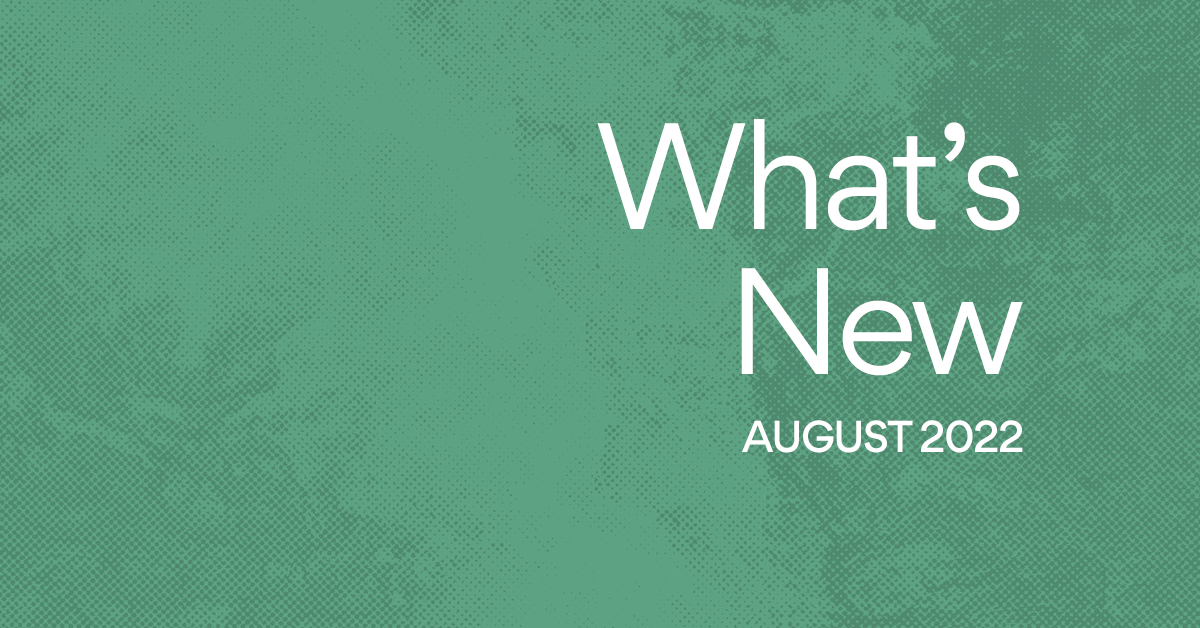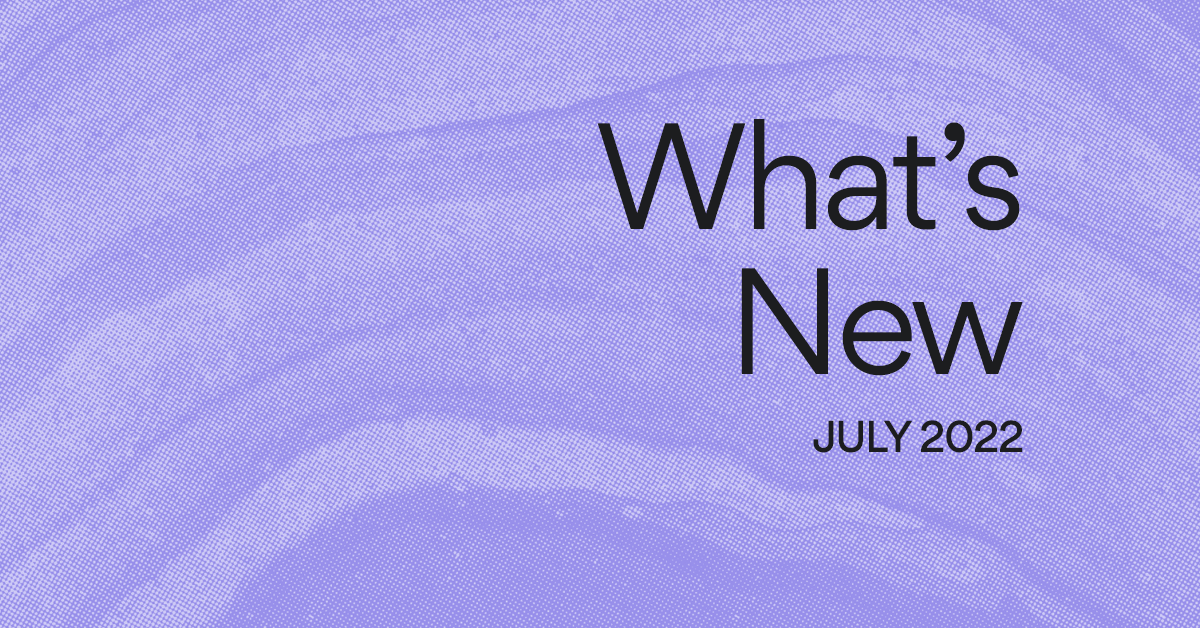Our product priorities for episode 7

At Asana, we’re currently gearing up to begin a new episode of work. Episode 6 was one of the most productive periods in the company’s history (summary coming soon!) and we’re excited to do even more in the next one. Our small, but growing product development team is focusing on these high level priorities to improve the service.
Speed & Infrastructure
stability > speed > features
Our most important design goal is to make sure you have access to your data when you need it. We don’t have a perfect uptime record, but we’re constantly improving. As we grow, we need to regularly redesign parts of our architecture to scale with the user base and ensure that we continue to deliver a great experience for everyone.
We have also always had the belief that interaction speed is critical to the success of the product. Our framework, Luna, enables our developers to write an incredibly responsive application, one that feels more like desktop software than a web page. Most things you do in Asana happen instantly. This team is chartered with eliminating the ‘most’.
Memory Retrieval
Asana is the collective memory of your organization. Our most successful customers put everything they can into the system. More than one has told us “if it isn’t in Asana, it doesn’t get done.” We can achieve this outcome for everyone only if they have confidence that they will be able to find their tasks again when they want them, and that they will be surfaced automatically in the right contexts. This is particularly important in the context of Bug Tracking, a use case that is very important to many of our early teams at software and web companies. We’ve heard clearly from customers that they need better ways to track and manage large collections of defects and ensure they are solving the most important problems. Our E7 work will enable you to search, filter, and sort your data in new ways that guarantee you always find the tasks you want.
Workflow
Asana is currently optimized for tasks with two states: incomplete and complete. There are many “work items”, however, that actually advance through many stages as part of a pipeline workflow. An applicant advances from uncontacted to contacted to phone screened, etc. A bug advances from reported to ‘fixed in the code’ to ‘fixed in production’ to verified. This program is responsible for making those workflows obvious to your team, so that you don’t have to rely on conventions to manifest them.
Big Teams
Asana is used by tens of thousands of small teams, and many larger ones. However, the organizational demands of larger groups are more sophisticated: additional layers of information hierarchy are needed, especially in the context of how people are broken up into teams. Those teams need to have effective and powerful internal communication that lives next to their work and be empowered to easily and centrally administer their workspace. Some of these improvements were actually begun in E6, and we’re excited to launch the first pieces soon.
Growth
The real question is not “How do we increase our user count?” — that is how we measure our success. The real questions are “What’s getting in this user’s way? This team’s way? How can we serve them better and make them fall in love with a product that effortlessly solves their needs? How do we make them so delighted that they tell their friends?” This team will identify the roadblocks at each step of the funnel to people who could benefit from Asana actually benefitting from Asana and either knock them down themselves or recommend the creation of new teams to do so.
Mobile
In the last episode, we made some major improvements to our highly-rated iOS app. We also started development on our first version for Android, which you’ll be seeing very soon. In Episode 7, we’ll continue iterating to make these experiences even better, including the implementation of most of the product improvements mentioned above. The new Asana mobile experience will be faster and more powerful than what you have in your hands today.
Feedback?
This is how we see our world right now. We are always on the lookout for new information, however, and intend to continue evolving the plan as we learn more from customers (and there is also, of course, a brand new episode starting in June). Do you have anything to tell us? Write in to feedback@asana.com or post a comment below.

